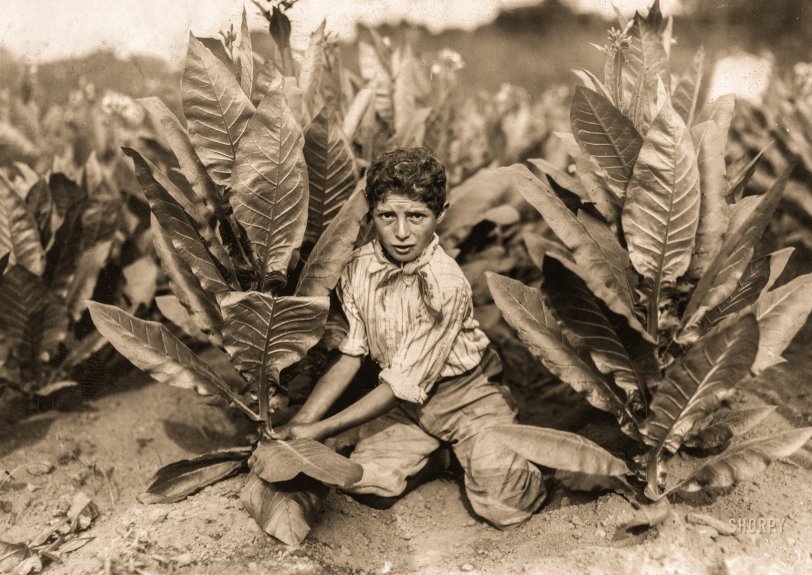


Framed or unframed, desk size to sofa size, printed by us in Arizona and Alabama since 2007. Explore now.
Shorpy is funded by you. Patreon contributors get an ad-free experience.
Learn more.

- Baldwin 62303
- Baldwin VO-1000
- Cold
- No expense spared
- Tough Guys
- Lost in Toyland
- And without gloves
- If I were a blindfolded time traveler
- Smoke Consumer Also Cooks
- Oh that stove!
- Possibly still there?
- What?!?
- $100 Reward
- Freeze Frame
- Texas Flyer wanted
- Just a Year Too Soon
- WWII -- Replacing men with women at the railroad crossing.
- Yes, Icing
- You kids drive me nuts!
- NOT An Easy Job
- I wonder
- Just add window boxes
- Icing Platform?
- Indiana Harbor Belt abides
- Freezing haze
- Corrections (for those who care)
- C&NW at Nelson
- Fallen Flags
- A dangerous job made worse
- Water Stop
Print Emporium
Tobacco Tim: 1917

August 6, 1917. "10 year old picker on Gildersleeve Tobacco Farm. Gildersleeve, Connecticut." Photo by Lewis Wickes Hine for the National Child Labor Committee. View full size.
Tobacco cropping
A job that most Southern children of past generations knew well. We started working in tobacco fields as soon as we were able and continued each year unless we left home after school. We learned to work hard and to play hard.
No fries come with this
He is harvesting shade tobacco, used as the outer wrapper of high-end cigars. Each leaf has to be individually removed and laid flat, so as not to damage the leaf. Children are no longer allowed, or forced to harvest shade tobacco. Last I knew the work is done by Haitians with work visas. They sit on their butts and scoot down the row; gentle on the leaves but hard on their backs. As with much agriculture, you cannot find American born citizens to do this work.
No wonder Tim looks worried
Tobacco pickers can absorb as much nicotine from a day's work as from smoking two or three packs of cigarettes. Nicotine poisoning causes nausea, vomiting, dizziness, headaches, and difficulty sleeping. I have no idea whether pesticides were used in 1917, but they are a major health risk for today's tobacco pickers.
Gildersleeve? Really?
I had only heard of "The Great Gildersleeve" as a child. There's a town? Amazing.
https://www.greatgildersleeve.com tells me more about the radio program. I do remember Fibber McGee and Molly, though.
But I wonder - do pickers get a nicotine hit? I wonder what it would be like to handle tobacco all day long -- the kid does not look happy at all. Could he be addicted to the nicotine?
























On Shorpy:
Today’s Top 5